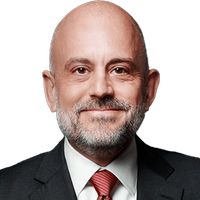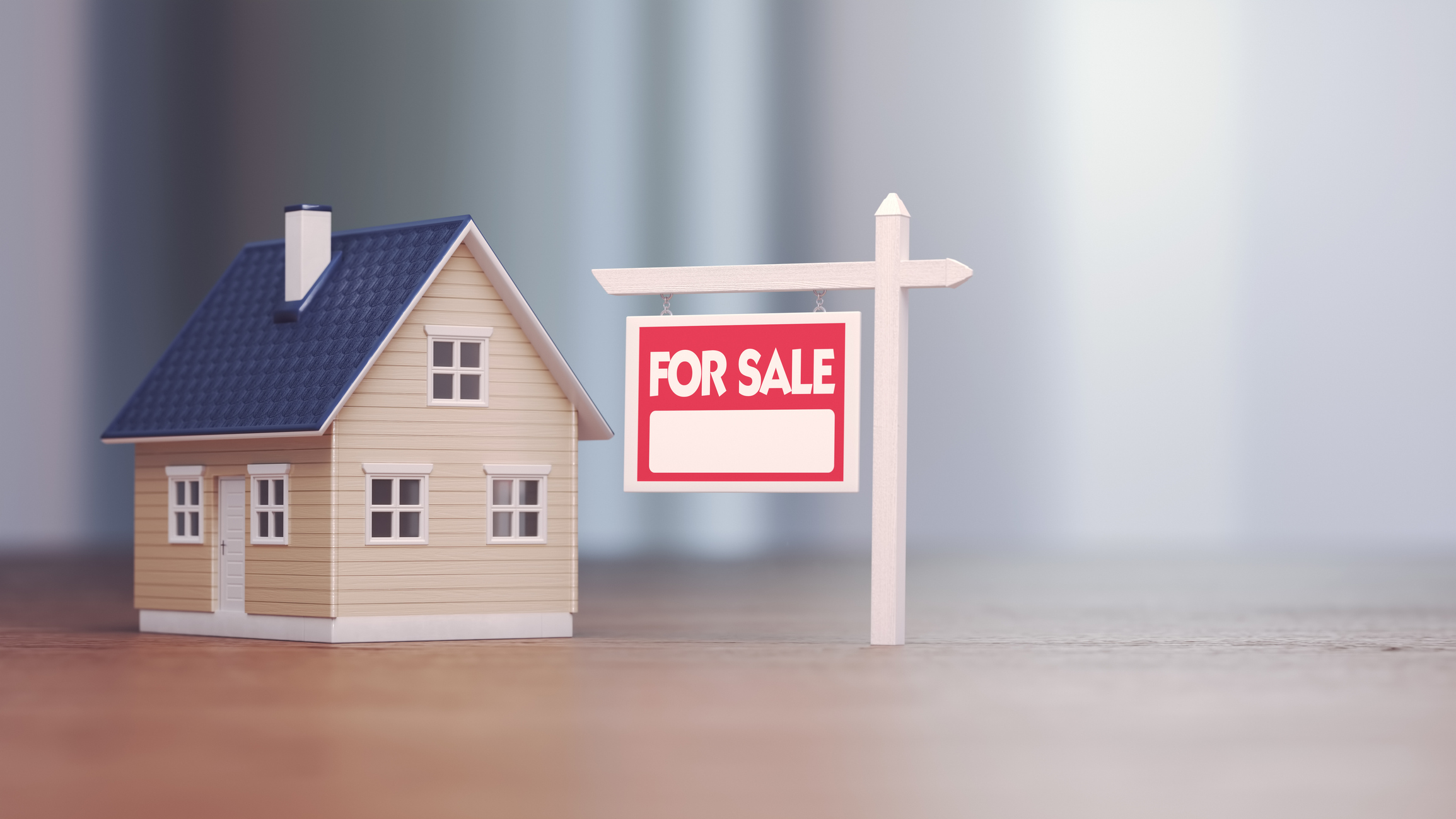My 5-Minute Retirement Plan
As you near retirement, switching from a saving and investing mindset to an income-driven outlook can be tough. But you’ve got to do it!


The most common mistake people make when planning their retirement is assuming that the way wealth was created is the same way they should hold wealth in retirement, with the added twist of being more conservative.
Popular belief suggests that as you age, the level of risk an investor takes should decline in an effort to preserve their assets and protect them from market loss. The general idea here is the younger you are, the more aggressive you should be. The older you are, the more conservative you should be.
The theory is that too much risk can lead to losses if markets fall with less time to recover, and by dialing down the risk it can help minimize losses.
From just $107.88 $24.99 for Kiplinger Personal Finance
Be a smarter, better informed investor.

Sign up for Kiplinger’s Free Newsletters
Profit and prosper with the best of expert advice on investing, taxes, retirement, personal finance and more - straight to your e-mail.
Profit and prosper with the best of expert advice - straight to your e-mail.
But here is the problem – when you dial down risk, you may solve for volatility and overall exposure to market losses, but at the same time you are reducing your earnings potential — which of course is the oxygen of a retirement plan.
It is a double-edged sword: If you take on too much risk, you run the risk of losing money. If you don’t take on enough risk, then you run the risk of running out of money. Most people struggle to find a balance, especially in a low interest rate environment like we are in now.
The Problems with Investing for Income
One approach often used is to simply keep the risk moderately high with the belief that profits can be skimmed from the portfolio in a way that aims to protect the principal while allowing the portfolio to grow over the long term. A variation of this would be to use a dividend portfolio, where you can receive dividends for income.
With either strategy you face uncertainty about how much income you will receive one quarter to the next and are forced to accept the possibility of having no earnings in a given year due to market volatility or poor company earnings.
How this plays out in real-life is income must be taken regardless of market performance because there is a need for income in retirement. The result of this is the problem being exacerbated, because in the absence of earnings you are depleting principal, which only compounds the problem.
And if you think bonds are the answer, think again. With interest rates on the rise, there is a high probability of losing principal or having bond yields running below inflation rates. Finding a fixed income alternative is a serious challenge.
What about the 4% Rule?
Another popular idea is what is known as the “4% Rule” for taking distributions. The theory is that based on past performance, if you withdraw 4% from your accounts then you “should” statistically carry those assets for 30 years.
This brings up another issue beyond just the potential for market losses and that is the effects of inflation. Inflation is the silent killer of all retirement plans by gradually reducing the purchasing power of your assets over time.
To shed some light on this problem, consider the annualized return your portfolio must have to fulfill the need of a 4% distribution, a 3% inflation rate, and fees around 1%. The math concludes that the break-even is 8% year over year without consideration for down years or volatility.
The risk here is the longevity, which is why the 4% Rule suggests a 30-year period. It is assumed that you will eventually run out of money. Couple this with a few bad years in the market and you have a recipe for principal depletion acceleration.
In order for a growth portfolio to flourish, the account needs time to do what its name suggests –grow. And when you are taking income from a portfolio designed for growth, you are sabotaging the progress.
Here is what is happening with all of these scenarios. There is an assumption that the way wealth was created – typically using a portfolio of growth stocks and ETFs – is the same way wealth should be held in retirement, but leaning more conservative.
All of the confusion and challenges with generating income … they all originate from this misconception. The mindset that rate of return and growth is the means for distributing income is the problem and cannot be achieved without a lot of luck on your side, and that is not a retirement plan.
The 5-Minute Retirement Plan Explained
Most clients come to me for help when they get stuck and find themselves transitioning from having to work for a living to worrying about their money for a living, and neither is a picture of freedom. The solution for this is really quite simple when you resolve to the fact that, growing money is done one way and distributing income is done another way.
The caveat is this, financial freedom is only achieved if the income is sustainable and you’re not waking up every day wondering if that freedom is going to be washed away with the next pandemic, political decision, leadership decisions, and a slew of other things outside of your control
So, once you have your thinking centered around income, to execute the Five-Minute Retirement Plan, you begin by figuring out how much income you need to supplement your Social Security and pension income to live the life you want. You must know this, otherwise you’re just making numbers up, and that just compounds the problem.
Once you have that figured out, you take that annual income total and divide it by 6%. (Why 6%? This is the average using my Assets2Income™ method. And if you would like to learn more about this, click here.)
The result of this calculation provides you with the approximate amount to be set aside and dedicated for generating the income you need right now to retire while the remaining assets are separated and invested long term as an inflation hedge.
The advantage to this method is the ability to concentrate on the purpose of each pool of money. Here is an example of how this works:
Under the 4% Rule using a typical “conservative” allocation, a $1 million retirement account would generate $40,000 of income without consideration for inflation as described before.
Using the Assets2Income™ Method, the same $40,000 of income could be generated from using $667,000 of the $1 million, leaving the remaining $333,000 available to invest long term as an inflation hedge.
The key takeaway here is that assets must be separated and allocated based on the purpose you have for the money. That is the Five-Minute Retirement Plan framework, and coupled with The Assets2Income™ Method, retirees are able to strategically separate their assets and solve for the two biggest variables within their retirement: Income now and income later. You can learn more about Assets2Income here: https://brianskrobonja.com/training-video.
Securities offered through Kalos Capital, Inc., Member FINRA/SIPC/MSRB and investment advisory services offered through Kalos Management, Inc., an SEC registered Investment Advisor, both located at 11525 Park Wood Circle, Alpharetta, GA 30005. Kalos Capital, Inc. and Kalos Management, Inc. do not provide tax or legal advice. Skrobonja Financial Group, LLC and Skrobonja Insurance Services, LLC are not an affiliate or subsidiary of Kalos Capital, Inc. or Kalos Management, Inc.
Securities offered only by duly registered individuals through Madison Avenue Securities, LLC. (MAS), Member FINRA & SIPC. Advisory services offered only by duly registered individuals through AE Wealth Management (“AEWM”), a registered investment adviser. Skrobonja Financial Group, LLC, Skrobonja Insurance Services, LLC, AEWM and MAS are not affiliated entities. The article and opinions in this publication are for general information only and are not intended to provide specific advice or recommendations for any individual. We suggest that you consult your accountant, tax or legal adviser with regard to your individual situation.
Profit and prosper with the best of Kiplinger's advice on investing, taxes, retirement, personal finance and much more. Delivered daily. Enter your email in the box and click Sign Me Up.

Brian Skrobonja is a Chartered Financial Consultant (ChFC®) and Certified Private Wealth Advisor (CPWA®), as well as an author, blogger, podcaster and speaker. He is the founder and president of a St. Louis, Mo.-based wealth management firm. His goal is to help his audience discover the root of their beliefs about money and challenge them to think differently to reach their goals. Brian is the author of three books, and his Common Sense podcast was named one of the Top 10 podcasts by Forbes. In 2017, 2019, 2020, 2021 and 2022, Brian was awarded Best Wealth Manager. In 2021, he received Best in Business and the Future 50 in 2018 from St. Louis Small Business.
-
 Investors Buy the Nasdaq's Big Dip: Stock Market Today
Investors Buy the Nasdaq's Big Dip: Stock Market TodayStocks are up and down again to end an up-and-down week ahead of big earnings announcements and the eventual return of regular economic data flow.
-
 What to Know About Portable Mortgages
What to Know About Portable MortgagesA closer look at how portable mortgages would work, who might benefit and why the concept is gaining attention amid high rates and limited supply.
-
 Here's How to Plan This Year's Roth Conversion, From a Wealth Manager
Here's How to Plan This Year's Roth Conversion, From a Wealth ManagerWhile time is running out to make Roth conversions before the end of the taxable year, consider taking your time and developing a long-term strategy.
-
 Four Times You Need a Second Opinion on Your Financial Plan
Four Times You Need a Second Opinion on Your Financial PlanIs your financial plan fit for purpose — or is your adviser peddling an outdated strategy? When you see these red flags, it's time for a second opinion.Evan
-
 'But It's Not My Fault!': Your Insurance Company Absolutely Will Blame You in These Five Scenarios
'But It's Not My Fault!': Your Insurance Company Absolutely Will Blame You in These Five ScenariosInsurance companies care about 'fault' in more ways than you think — from payment mishaps to your neighbor's landscaping — so it's on you to manage the risks.
-
 How to Calm Your Retirement Nerves When It's Time to Shift from Savings Mode to Spending Mode
How to Calm Your Retirement Nerves When It's Time to Shift from Savings Mode to Spending ModeTransitioning from saving to spending in retirement can be tricky, but devising a strategic plan can help ensure a smooth and worry-free retirement.
-
 Why Wills and Trusts Aren't Enough in the Great Wealth Transfer, From an Attorney Who Knows
Why Wills and Trusts Aren't Enough in the Great Wealth Transfer, From an Attorney Who KnowsFamilies need to prepare heirs through communication and financial know-how, or all that money could end up causing confusion, conflict and costly mistakes.
-
 Private Markets for Main Street: What Financial Advisers' Clients Need to Know
Private Markets for Main Street: What Financial Advisers' Clients Need to KnowWith product innovation 'democratizing' private market access for everyday investors, advisers must step up their game to educate clients on the pros and cons.
-
 Seven Practical Steps to Kick Off Your 2026 Financial Planning
Seven Practical Steps to Kick Off Your 2026 Financial PlanningIt's time to stop chasing net worth and start chasing real worth. Here's how to craft a plan that supports your well-being today and in the future.
-
 A Retirement Plan Isn't Just a Number: Strategic Withdrawals Can Make a Huge Difference
A Retirement Plan Isn't Just a Number: Strategic Withdrawals Can Make a Huge DifferenceA major reason not to set your retirement plan on autopilot: sequence of returns risk. Here's how to help ensure a bad market won't sink your golden years.